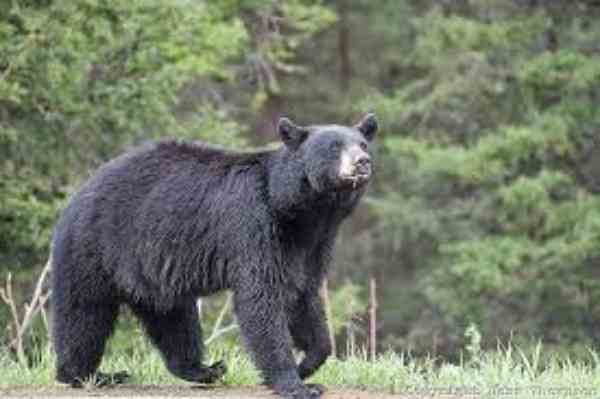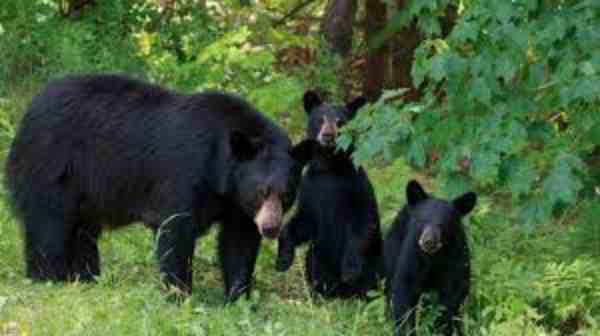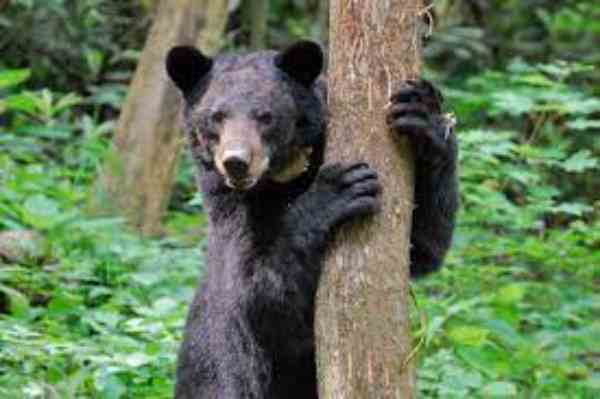Table of Contents
Pennsylvania’s black bear population is booming in recent years after narrowly avoiding extinction in the early 20th century. With a steadily growing population of approximately 18,000 bears statewide, these curious and crafty mammals have become familiar sights to many Pennsylvania outdoor enthusiasts. The cool temperatures and abundant food sources throughout the state provide optimal habitats for black bears to not just survive but thrive. In fact, thanks to careful stewardship and conservation measures introduced by lawmakers in 1972, Pennsylvania now holds the title of having the largest black bear population density on the east coast.

Are there Black bears in Pennsylvania?
For those living in Pennsylvania, the idea of encountering a bear may seem far-fetched. However, sightings of black bears are increasing every year throughout the state, with an estimated twenty thousand living largely in forests and mountainous regions. Fortunately, due to their preference for natural landscapes and eluding contact with humans, there is very little cause for alarm when it comes to encountering them while out in nature. In fact, the Pennsylvania Game Commission recently released documentation showing that bear-human conflicts have dropped significantly since 2010.
Where do black bears live in Pennsylvania?
Black Bears can be found throughout much of the state, though there are certain regions that tend to attract higher numbers. Some of these include northern and western parts of Pennsylvania like the Allegheny National Forest, the Alleghany Plateau, and the Poconos region. Black bear sightings are also common in Central Pennsylvania, including around State College and Williamsport areas.
Habitat
Black Bears in Pennsylvania primarily inhabit deciduous forests and can often be found near mountain slopes, swamps and bogs, rivers, farmlands, and cities. Black Bears also roam across open meadows and in suburban neighbourhoods, which makes them quite versatile when it comes to their habitats.
Diet
They are opportunistic feeders and eat fruits, nuts, insects, honey and anything else that will provide them with sustenance. In the summer months, they prefer to consume plant foods such as berries or other sweet material whilst, during the winter, they tend to dine on carrion and small prey such as rodents or deer.

Colour
Pennsylvania’s population of Black Bears is split into two distinctly different divisions – those that display a midnight black fur coat, and those that boast a cinnamon brown colouring. While both occur throughout the state and are thought to have no particular geographical relationship, more male black bears tend to sport the traditional ink-black hue than females. An interesting trend has seen black-furred bears appearing more often on the western side of the state.
Size, Lifespan and Weight
The average black bear will weigh between 150 to 600 pounds, or even more in some cases. In terms of length, an adult black bear can have a total standing size of 3 to 7 feet. Furthermore, black bears are long-lived species with a lifespan of approximately 15 – 25 years when living in the wild, and up to 30 years when in captivity.
Predators
Bears in Pennsylvania have the occasional run-in with some of their more vicious predators, such as coyotes, bobcats and mountain lions. Fortunately for the bears, they are generally much larger than their predators and can often repel the attack. Still, if the predator sees an opportunity like a bear cub being left alone for even just a few minutes it might rush in to feed or carry away the smaller animal.
This is something all bear families should keep in mind when venturing into Pennsylvania’s forests and mountain ranges; while they may never see any of these predators on their travels, they must still be aware that they could be nearby lurking in shadows or behind tall grasses.

Reproduction
Black bears are equipped with sophisticated reproductive strategies that have allowed the species to thrive, even in the face of intense competition for resources. Their mating period starts in mid-May, although different populations have slight variations in timing. During this time, female bears will mate with multiple males and store sperm from each mating until wintertime when she enters into a state of delayed implantation.
This means that although her body can hold onto multiple sets of sperm at once, it won’t begin the process of producing cubs until later on in the year. A few months after entering hibernation, she’ll give birth to litters averaging two cubs (though litters can range between one and four). The mother bear will raise these cubs on her own over the winter before they venture out on their own come springtime.
How many bears are in Pennsylvania?
With the Allegheny National Forest, Sinnemahoning State Park, and Elk Country Visitor Center, Pennsylvania provides an excellent habitat for black bears. It is estimated that there are roughly 20,000 black bears in Pennsylvania today.

When do black bears come out of hibernation in Pennsylvania?
Winter is often viewed as a time of cold, snow and slumber, but Pennsylvania’s black bears have their own timeline to follow. Each year, they enter hibernation in late fall, usually between October and November depending on the climate in a given year. During that wintertime snooze, they can go months without eating or drinking anything; all of the energy they need comes from stored body fat reserves. In mid-March to early April, as temperatures start to climb, black bears wake up and leave their dens – motivated by frozen thaw cycles and increasing daylight – to begin spring renewal.
Reference:
https://www.pgc.pa.gov/Education/WildlifeNotesIndex/Pages/BlackBear.aspx
https://www.pgc.pa.gov/Wildlife/WildlifeSpecies/BlackBear/Pages/LivingwithBlackBears.aspx
https://www.pamammalatlas.com/ursidae/15-black-bear
A motivated philosophy graduate and student of wildlife conservation with a deep interest in human-wildlife relationships, including wildlife communication, environmental education, and conservation anthropology. Offers strong interpersonal, research, writing, and creativity skills.










